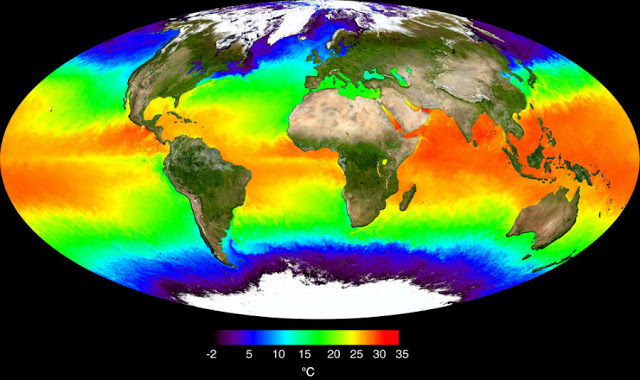 |
| Image: NASA |
According to the researchers, these shifting patterns have been observed because of the slowdown in the global surface temperature trend which happened during the past decade. “Greenhouse gases continued to trap extra heat but for about 10 years starting in the early 2000s, global average surface temperature stopped climbing and even cooled a bit,”said Josh Willis from NASA’s Jet Propulsion Laboratory (JPL) in Pasadena, California. For most part of the 20th century, the greenhouse gas concentrations increased and trapped more heat energy on Earth and due to that the global temperature of the surface also increased. But this trend seems to have reversed temporarily in the 21st century.
The Pacific Ocean is the primary source of the subsurface warm water found in the study. However, some of that water has been shifted towards the Indian Ocean too. Since 2003 some pretty strong winds and other climatic features have been piling up the warm water in the upper 1,000 feet of the Pacific Ocean, pushing it towards Asia and Australia. The study was published on Thursday in the journal Science.For the study, the researchers studied the direct ocean temperatures and also analyzed the observations from a global network of 3,500 ocean temperature probes which is known as the ArgoArray. When the researchers compiled the data and the readings, it was observed that they showed increase in the temperatures below the surface.
There have been previous attempts to explain the global surface temperature cooling trend but they have hugely relied on the climate model results or a combination of modeling and observations. Methods like this may be better at displaying results for over the decade or centuries but are not reliable for short term. However, this study uses observations and thus shows better results for the short term period. This period could be as small as 10-20 years and in shorter time spans, natural changes can have larger impact on climate change than human-caused warnings.
The study helps understand the present state of the oceans and what can be done in order to preserve the nature for the long run. The slowdown in temperature change comes as good news, considering the pace at which climate change is occurring.































